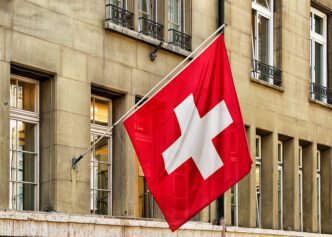KEY POINTS
- The Trump administration is developing plans for an IPO of Fannie Mae and Freddie Mac, which could generate up to $30 billion for the government.
- This effort aims to end the government conservatorship that began in 2008 and is supported by proponents who argue the companies are financially viable.
- The plan faces criticism from economists who warn that privatization could lead to higher mortgage costs for homebuyers and result in a windfall for hedge funds that have invested in the companies.
WASHINGTON – The Trump administration is actively developing plans for a historic initial public offering (IPO) of Fannie Mae and Freddie Mac, the government-owned mortgage giants that backstop the American housing market, a move that could generate tens of billions of dollars for the government but has sparked immediate fears of higher mortgage costs for millions of Americans.
The plans, which have not yet been finalized, represent a renewed and determined effort by President Donald Trump to end the government conservatorship that the two companies have been under since they were bailed out during the 2008 global financial crisis. According to a senior administration official, the White House believes an IPO of up to 15% of the two companies’ shares could raise as much as $30 billion, which would make it the largest public offering in history.
The president has been weighing such a move for years, having tried and failed to privatize the two entities during his first term. He has revived the effort in his second term, posting on his Truth Social platform in May that he was “giving very serious consideration to bringing Fannie Mae and Freddie Mac public” and would make a decision “in the near future.”
In recent weeks, the president has held a series of meetings with top Wall Street bank CEOs, including JPMorgan’s Jamie Dimon, Goldman Sachs’ David Solomon, and, this week, Bank of America’s Brian Moynihan, with whom Trump reportedly discussed a potential Fannie and Freddie IPO.
The push to privatize the mortgage giants has long been a goal for many of the president’s allies in the Republican Party, who argue that the government conservatorship, which was intended to be temporary, has gone on for far too long. Proponents say the companies are now financially viable on their own and that returning them to the public market could raise a significant amount of money for a government that is flooded with debt.
However, the plan has been met with alarm from many economists and consumer advocates, who warn that removing the implicit government guarantee that Fannie and Freddie currently enjoy could severely upset the delicate balance of the U.S. mortgage market. The primary concern is that a fully privatized Fannie and Freddie would have to charge higher fees to compensate for their increased risk, a cost that would be passed directly on to homebuyers.
Mark Zandi, chief economist at Moody’s Analytics, estimated in 2024 that such a privatization could cost the typical American taking out a new mortgage between $1,800 and $2,800 per year in higher payments.
Critics have also pointed out that a massive IPO would primarily benefit a small group of wealthy financial backers, not the American taxpayer. Over the last decade, powerful hedge funds have amassed enormous stakes in the two companies, betting that they would one day be privatized. A public offering would result in a massive windfall for these investors.
Fannie Mae and Freddie Mac play an indispensable role in the U.S. housing market. While they do not issue mortgages directly to borrowers, they buy mortgages from lenders and repackage them as securities for investors. This process guarantees that money continues to flow in and out of the housing market, and it is the primary reason that the 30-year, fixed-rate mortgage—the cornerstone of American homeownership—is so widely available and relatively affordable. Together, the two companies guarantee approximately 70% of all U.S. mortgages.
They were placed under government control on September 7, 2008, after facing catastrophic losses amid crashing home values. The move was a desperate measure to prevent their collapse, which would have brought the entire U.S. housing market to a standstill just a week before the failure of Lehman Brothers sparked the global financial crisis.
An IPO would return Fannie and Freddie to their pre-2008 state as publicly traded companies, albeit with the continued backing of the U.S. Treasury. The administration’s plan now sets the stage for a monumental battle over the future of the American housing market, pitting a long-held conservative desire for privatization against the potential for higher costs for everyday homeowners.








